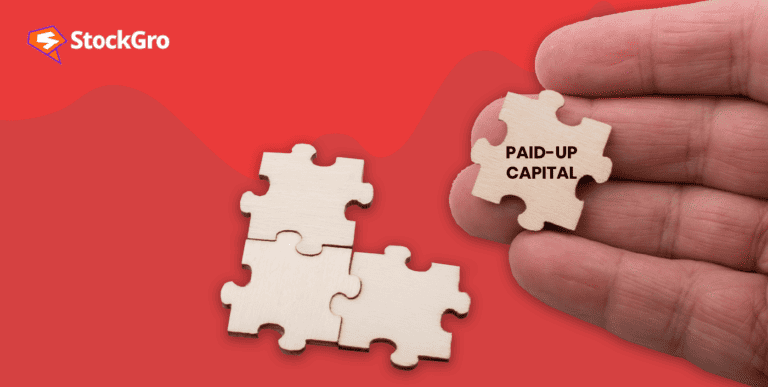
A capital reserve shows the money a company has for future costs or to balance any money lost. It comes from the extra money a company has and is made from its profit. This money term also talks about the extra money banks need to have to follow rules. It’s different from reserve requirements which are the must-have cash by rules from the Reserve Bank of India.
Understanding capital reserve
A company can make a capital reserve by doing different things like selling things it owns, increasing the value of what it owns to the current price, selling shares for more than the basic price (share premium), gaining from paying back debentures, and selling shares again that were taken back before.
In simple words, a capital reserve comes from money made not from the regular company business.
This money helps a company pay for sudden small costs without borrowing expensive money. It does not cover expected or long-term costs. The capital reserve is usually kept in the company’s bank account or put in easy-to-get money places.
You may also like: The best banks in India: Leading the way in finance
Requirements for a capital reserve
A solid capital reserve is what financial advisers recommend, it should be equal to three to six months of a company’s regular expenses. This reserve is kept aside and invested for the long term, not for paying dividends to shareholders. This money is marked for special uses like long-term projects, covering capital losses, or handling other unexpected situations.
A capital reserve comes from activities not related to the company’s regular operations or how its stock is doing, so it does not show how well the company is operating.
Capital reserve example
Consider a scenario where you wish to buy land in the future, so you save money, sell old belongings, and store that money in a distinct savings account. This money is earmarked solely for purchasing land, nothing else.
Similarly, visualize a company desiring to construct a new office without resorting to hefty loans due to high costs. They chalk out a plan to build this office utilizing a capital reserve. They offload old lands and assets, and the proceeds from these sales are channeled into the capital reserve. This reserve is not to be used for paying dividends to shareholders, ensuring all the funds are allocated for the new office construction.
Also Read: Bank rate vs. Repo rate – Understanding the key differences
Methods to Create a Capital Reserve
| Method | Description | Example |
| Selling Fixed Assets | A company sells assets it owns to accumulate funds in the capital reserve. | Selling old machinery or land. |
| Asset Revaluation | Increasing the recorded value of assets to reflect current market prices. | Revaluing real estate holdings. |
| Issuing Shares above Par Value | Selling shares for more than their face value and placing the extra amount in the capital reserve. | Issuing shares at Rs. 120 when par value is Rs. 100. |
| Profits on Debenture Redemption | Profits made from paying back debentures can be placed in the capital reserve. | |
| Reissuing Forfeited Shares | Selling shares that were previously taken back and placing the profits in the capital reserve. |
How do businesses invest their reserves?
A business can save its spare cash reserves in a savings account to earn a little interest. If a company has more reserves, it might put them in money market instruments or similar cash-like securities to earn extra interest.
How do you account for capital reserves on a balance sheet?
In a financial statement, capital reserves should be shown under “shareholder equity.” This shows that this money can be used for future costs or unexpected losses.
Also Read: Working capital – the what, how, and why of business lifelines
How do companies raise capital?
A company can get capital by selling equity, either through private placement to certain investors or by selling shares in a public offering. They can also get capital by taking a loan or selling bonds. If needed, a bigger company can also get funds by selling their assets, like unused land or even a part of the company.
Exceptions to capital reserve
At times, a capital reserve is not made for a specific long-term project. Instead, when a company senses the need to brace for economic uncertainties like inflation, recession, or intense competition, it may set aside money. This money can come from the profits on selling assets or from buying a small company. This way, a reserve is created.
The process of capital reserve accounting can also be a tool to balance out any capital losses. Profits from asset sales are not always gotten in cash, they are noted in the account books. This is similar to how losses on asset sales are recorded. The reserves can be used to balance these capital losses.
Wrapping up
In conclusion, capital reserve accounting is a vital means for funding a company’s long-term project. Especially for companies not keen on getting funds from external sources like debt or term loans, this reserve can fully finance a new project.

